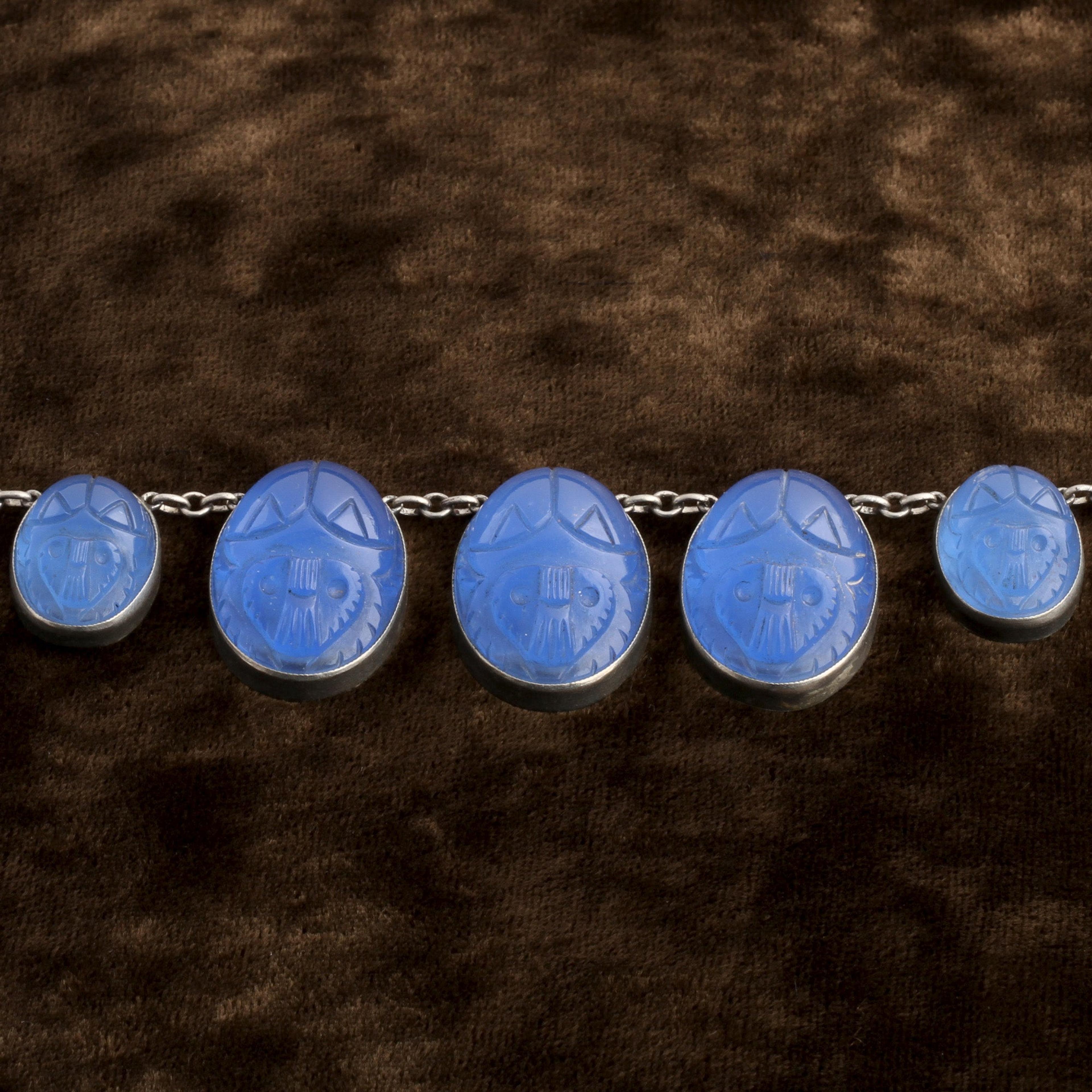The opulent imagery and mythology of Ancient Egyptian art and artifacts has fascinated Westerners since the earliest archaeological excavations of the pharaoh's tombs. This necklace was fashioned during the twentieth century period known as Egyptian Revival, a period in design marked by its heavy borrowing from the symbolic vocabulary of the Ancient Egyptians. The 18" necklace features a parade of cast blue glass scarabs complete with faux hieroglyphics on the backs.
thedetails
- Materials
silver tone metal, blue glass scarabs ranging from 3/4" to 1" in length
- Age
c. 1920
- Condition
Very good
- Size
18" length
Need more photos?
Send us an email to request photos of this piece on a model.

Aboutthe
Art DecoEra
1915 — 1940
Motifs like ziggurats and sunbursts, stripped of visual clutter, conveyed the optimism of an increasingly technological world. In jewelry, the predominant use of white metals let colorful gems take center stage. Stones that were opaque and true in color, like lapis lazuli, onyx, jade, coral, and opal were worked into designs alongside more precious and brilliant gems, like diamonds, sapphires, rubies, and emeralds. Extra-long beaded necklaces and tasseled “sautoirs” followed the narrow flapper silhouette. The baguette cut was an Art Deco innovation, and the decade saw increased use of other angular diamond cuts, like the precise calibré cut and the emerald cut. Synthetic colored gems, specifically ruby and sapphire, were celebrated as a scientific marvel. Marcel Tolkowsky, 21 years old at the time, published the design for the round brilliant cut in 1919.
please note:Terms of Sale
Antiques can be returned unworn and in original condition within 10 days of delivery for an exchange or refund minus the cost of shipping. Once a piece has been altered, including ring re-sizing, it is FINAL SALE.




